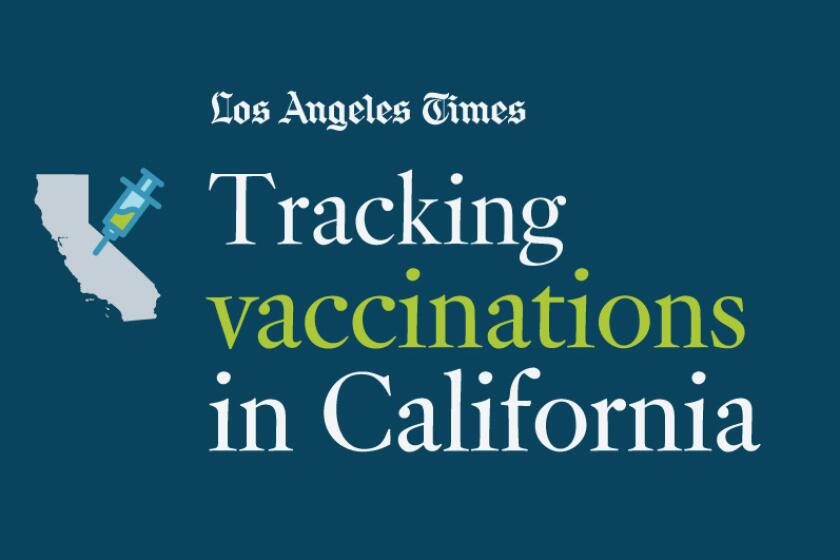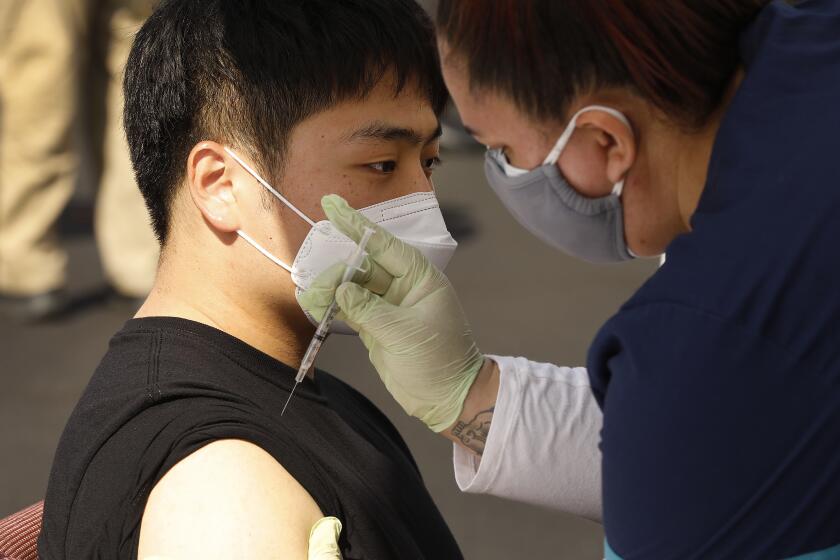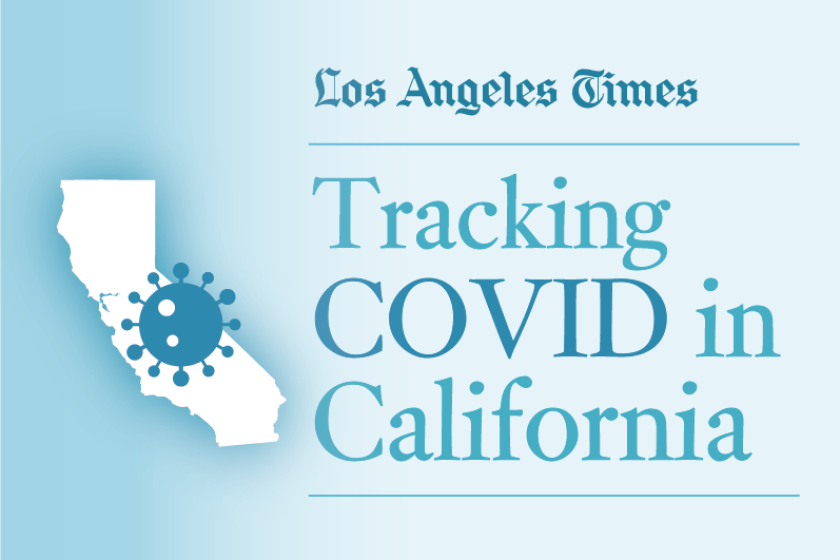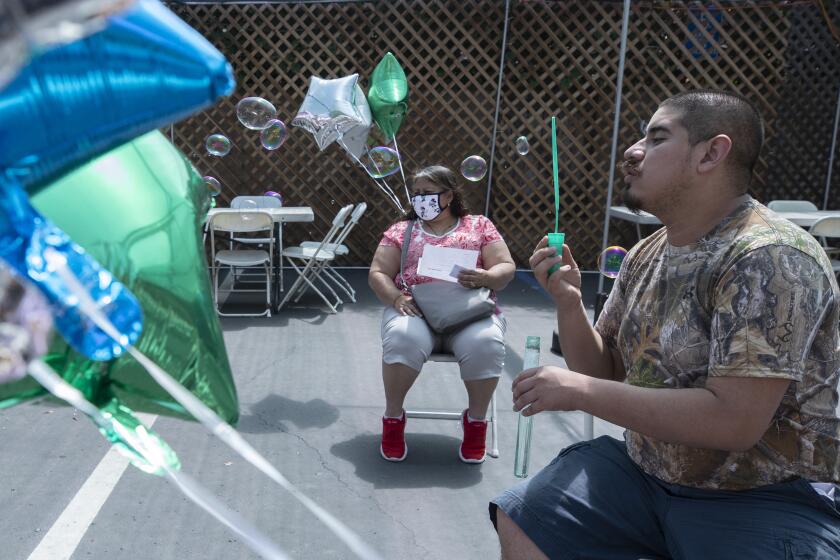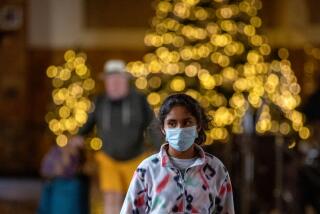Don’t put away your face masks. We may need them even as COVID-19 fades
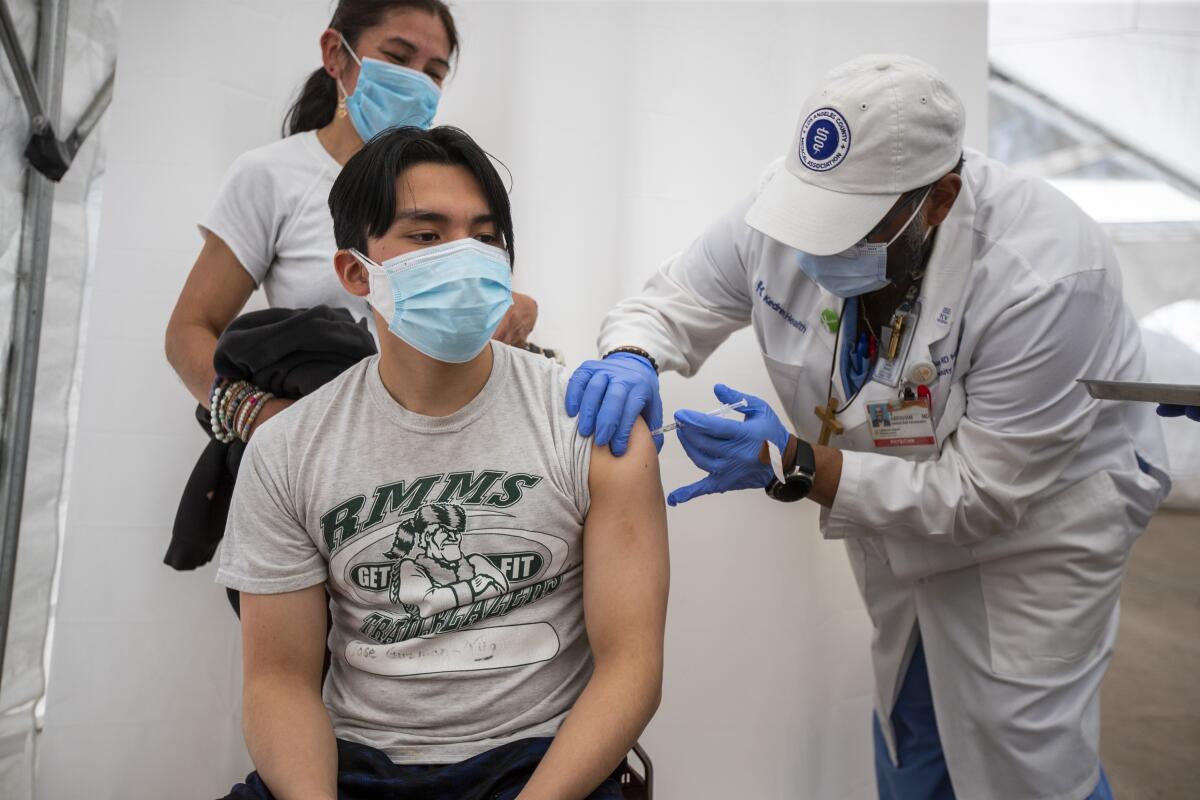
- Share via
More than a year after the COVID-19 pandemic began, a return to normalcy seems tantalizingly close. But even as restaurants reopen and shopping malls fill up, a glaring reminder of the virus’ presence remains: face masks.
Mask mandates remain in place in most regions across the globe, but the list of places where mask orders have been lifted is growing. Israel dropped its outdoor mask mandate this week, noting that more than half its population has been fully vaccinated. In the U.S., a growing number of states have lifted restrictions, including New Hampshire, which dropped its mandate last week even as coronavirus variants circulate.
In California, where signs of progress have been evident, is it too soon to eliminate one of the first lines of defense against the virus? Here’s what the experts have to say:
Experts say about most Americans will need to be vaccinated to bring the coronavirus pandemic under control. Track California’s progress toward that goal.
With vaccinations increasing and low transmission and hospitalization rates, is it time to get rid of face masks?
In short, no.
Health experts think an end to all face mask requirements would be premature.
“Will we be masking in 2025? I doubt it. But it’s still too early to say when we will ditch them, and I think they’ll be one of the last things to go” said Andrew Noymer, a UC Irvine associate professor of public health. “They’re cheap, they’re relatively easy to use and they work.”
So far, more than 32% of the state has been fully vaccinated and roughly 44.5% of Californians have received at least one dose of the Pfizer-BioNtech, Moderna or Johnson & Johnson vaccine, according to state and federal data. While that number continues to grow, a large chunk of the population still has not received any shots.
California is not a monolith. In the state’s 58 far-flung counties some pockets may be less protected than others amid lingering hesitancy or struggles with access. And although experts and health officials think the vaccines protect against the growing number of variants, it’s still too soon to say whether the protections are ironclad.
“Right now, what’s so encouraging in California is that we’re vaccinating at a high rate and we’re masking at a high rate. That means that if the virus found a way to escape the mask, it can’t find a susceptible host,” said Dr. Kirsten Bibbins-Domingo, chair of the epidemiology and biostatistics department at UC San Francisco’s School of Medicine.
“The virus is not gone — you only have to look at Michigan,” where cases and hospitalizations have soared in recent weeks, largely because of the spread of the B.1.1.7 variant, also known as the U.K. variant.
With so many Americans becoming immunized, it’s natural to look ahead and wonder how long this protection will last. The answer: No one knows.
Still, if vaccinations continue to rise, hospitalizations and transmission rates continue to stay low and vaccines prove they can fight against the growing number of variants, it’s possible change could come to California sooner.
Restrictions could be dropped in certain areas, such as outdoors, while kept in place elsewhere, such as the grocery store. State and federal officials have already said those who are fully vaccinated can take off their face masks in private settings.
But as the state prepares to fully reopen, with some caveats, on June 15, there’s been no indication the mask mandate will be lifted.
“The fact that we’re vaccinating like crazy, plus the fact that our numbers are low now is good,” Noymer said. But “nobody really knows if there’s going to be a variant in the fall or if we’re going to have to have boosters.
“There are so many wild cards in this pandemic.”
What if we hit herd immunity? How would that change the timeline?
We may yet be a long way from herd immunity, health experts say. That form of protection against the virus would occur when a very large swath of the population — a moving target between 70% and 90% — has reached immunity either through infection or vaccination. At this point, when children have not yet been authorized to be vaccinated and many adults still need a shot, that goal is a ways off.
“I fear it’s a little illusory, this notion of herd immunity,” Gov. Gavin Newsom said during a news briefing Tuesday when asked whether his administration had an estimate for when the state would achieve it.
The concept is especially nebulous when dealing with a virus that can mutate into different forms.
“One of the reasons the flu season peters out every spring is that there’s a sort of temporary herd immunity that takes hold, and the reason it comes back is that there’s a new strain of influenza the following fall. In the context of COVID, that would be a new variant,” Noymer said. “It’s not like you check a box one day and we’re all at herd immunity.”
But as talk rises of vaccine passports and other vaccination requirements, it’s possible the concept of herd immunity could be applied to certain spaces, such as offices, to relieve people of mandatory face mask requirements.
People with developmental disabilities practice taking shots to avoid anxiety, and potential physical resistance, when time arrives to take the COVID-19 vaccine.
Could face masks be part of our indefinite — or permanent — future?
Perhaps.
Travel, for example, could be an area where face mask use could be commonplace in the long run because it forces close contact with people from different regions.
“When you talk about air travel, you’re not talking about ‘Would I feel safe with all of San Francisco sitting on a plane?’ You’re talking about ‘Would I feel safe with the whole world sitting on a plane?’” Bibbins-Domingo said. “California is not an island.”
Health experts say there could be instances in the U.S. where mask wearing becomes routine, as is the case in other countries, though not necessarily under a mandate.
“They’re used extensively in Asia — in Korea and in China,” said Dr. George Rutherford, an epidemiologist and infectious diseases expert at UC San Francisco. “I could see in our future that it could be normal, polite behavior that if you have a cold, you’d wear a mask outdoors.”
Masks could be used to protect against new flu mutations, Rutherford said, or in hospitals or crowded settings. But ultimately, as protections solidify against the coronavirus, constant use of face masks in everyday scenarios will likely go by the wayside.
“In normal life — walking up and down the street, going to restaurants — if we get vaccine levels up, I would be comfortable not wearing a mask.”
More to Read
Sign up for Essential California
The most important California stories and recommendations in your inbox every morning.
You may occasionally receive promotional content from the Los Angeles Times.
